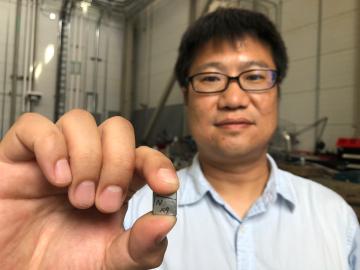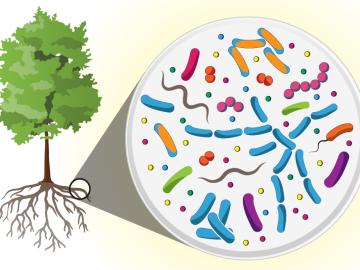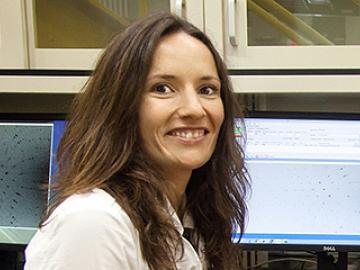
Filter News
Area of Research
- Advanced Manufacturing (2)
- Biological Systems (2)
- Biology and Environment (4)
- Building Technologies (2)
- Clean Energy (48)
- Climate and Environmental Systems (2)
- Computational Biology (1)
- Energy Frontier Research Centers (1)
- Fossil Energy (1)
- Fuel Cycle Science and Technology (1)
- Fusion Energy (1)
- Materials (52)
- National Security (2)
- Neutron Science (26)
- Nuclear Science and Technology (14)
- Nuclear Systems Modeling, Simulation and Validation (1)
- Sensors and Controls (2)
- Supercomputing (23)
Date
News Topics
- 3-D Printing/Advanced Manufacturing (5)
- Advanced Reactors (1)
- Artificial Intelligence (1)
- Big Data (1)
- Bioenergy (2)
- Biology (1)
- Biomedical (4)
- Clean Water (1)
- Climate Change (1)
- Composites (3)
- Computer Science (14)
- Critical Materials (1)
- Cybersecurity (3)
- Energy Storage (2)
- Environment (3)
- Fusion (4)
- Grid (3)
- Isotopes (6)
- Materials Science (10)
- Mercury (1)
- Microscopy (5)
- Molten Salt (4)
- Nanotechnology (9)
- Neutron Science (8)
- Nuclear Energy (10)
- Physics (9)
- Polymers (5)
- Quantum Science (3)
- Security (7)
- Space Exploration (2)
- Summit (2)
- Transportation (7)
Media Contacts
Physicists turned to the “doubly magic” tin isotope Sn-132, colliding it with a target at Oak Ridge National Laboratory to assess its properties as it lost a neutron to become Sn-131.

Oak Ridge National Laboratory scientists have devised a method to control the heating and cooling systems of a large network of buildings for power grid stability—all while ensuring the comfort of occupants.



Philip Bingham has two pieces of advice for researchers new to Oak Ridge National Laboratory: (1) develop a skill set that can be applied to multiple research areas, and (2) get out and meet folks across the lab. “The favorite part of my work is that I’ve done a lot of very diffe...


Three researchers from the Department of Energy’s Oak Ridge National Laboratory have been elected fellows of the American Physical Society (APS). Fellows of the APS are recognized for their exceptional contributions to the physics enterprise in outstanding resear...



Scientists at the Department of Energy’s Oak Ridge National Laboratory used neutrons, isotopes and simulations to “see” the atomic structure of a saturated solution and found evidence supporting one of two competing hypotheses about how ions come


